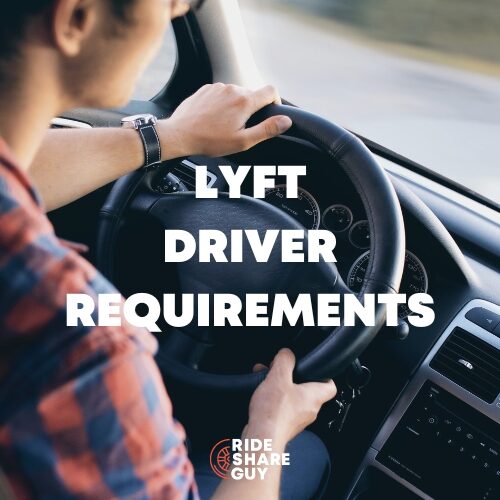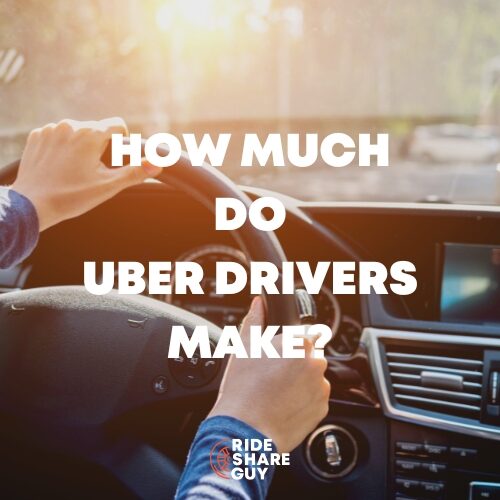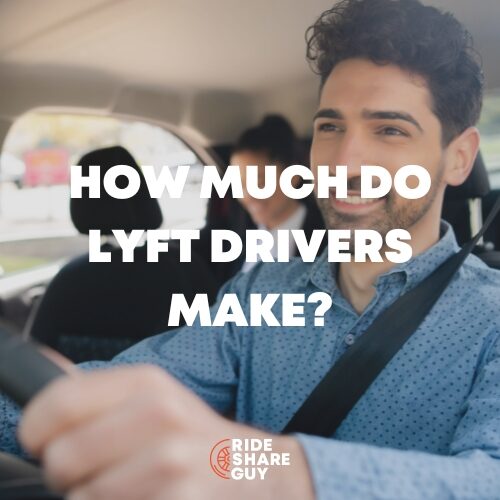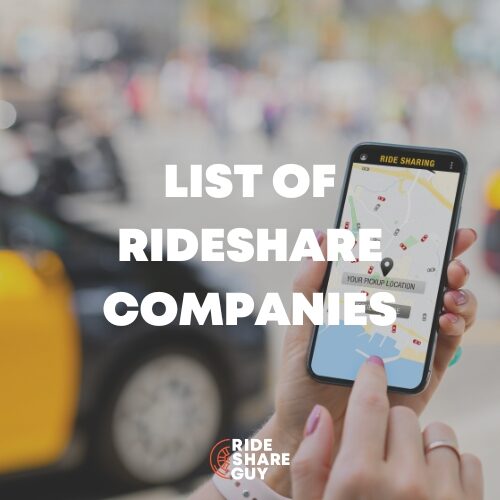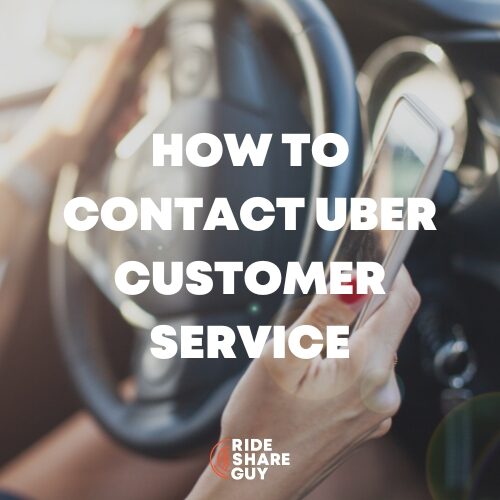How often do rideshare drivers get to interview the CEO of Uber? In Harry’s case, three times, so far!
Below, Senior RSG contributor Sergio Avedian shares his opinion of Uber CEO Dara Khosrowshahi’s answers to Harry’s questions, if they were satisfactory, and what Sergio would have liked to hear more about.
I watched Harry’s interview with Uber CEO Dara Khosrowshahi twice. This was the third time Harry interviewed him, and I think it was the best one out of the three.
He could have pushed on certain topics such as the independent contractor (IC) status of drivers and safety, but these interviews have an allotted time.
The following is my take on the main subjects Harry and Khosrowshahi discussed.
Interview Questions & Answers with Uber CEO Dara Khosrowshahi
Read below for our thoughts on Dara’s answers to our questions or watch Harry’s interview with Uber’s CEO:
Question: What took so long for Uber to make the changes that allow drivers to see upfront fare and destination?
Khosrowshahi admitting to not listening to the drivers and saying guilty as charged was big, in my opinion.
I think the new changes to upfront pricing will be a much-welcomed change for drivers all over the country.
Seeing the destination of the passenger before accepting a request with no Acceptance Rate (AR) and Cancellation Rate (CR) penalties is what drivers wanted for over a decade.
It definitely will improve the driver experience and may lower cancellations due to the driver picking and choosing which trips they want to do.
- Overall, this is a huge positive.
- On the downside, this may open the door to destination discrimination, but time will tell if this will be the case.
In California, the largest Uber market, things remain the same. We have been allowed to see the rider’s destination for a couple of years, albeit with penalties (must accept the last 5 of the 10 pings).
For me, as Khosrowshahi said, the answer lies in the technology, accuracy, and speed of the new algorithms. I have my personal opinion on this, which I will be sharing with the readers in a later article.
But the skeptic in me says, why would Uber give up something like the destination of the rider, which they have fought tooth and nail for a decade?
In the past six years as a driver, I have learned there are no free meals in this gig. Yes, Uber will be paying less on longer trips and more on shorter trips, or as they call it “rebalancing”. Under the upfront pricing scheme for drivers, Uber is also getting rid of the old pricing model based on time/distance.
Khosrowshahi calls this change revenue neutral for the driver, same pay level but more transparency and satisfaction. Why fix it if it isn’t broken comes to mind.
Question: Why are strings sometimes attached to popular driver programs like this in the form of acceptance rate requirements or limits on destination filters?
I liked Khosrowshahi’s answer here, that those strings attached, like in California, may be removed if Uber algorithms can price trips better, which will automatically increase AR.
I’ll believe it when I see it, until then, my cherry-picking continues.
Question: Did Uber’s push for IC have anything to do with these changes?
Khosrowshahi said that this major change was not due to regulatory pressure was not sincere, especially with the 125K docs being leaked by the whistleblower.
I don’t think Uber is going to have an easy time going forward with its lobbying efforts.
Question: Why did Dara say drivers are earning $39 per active hour and what exactly is an active hour? *Note: It is $30 and the figure Khosrowshahi shared was incorrect.
Khosrowshahi said earnings have dropped by almost 25% since that Bloomberg interview from $39/hr Active to $30/hr per Utilized hour (including tips and incentives).
Active/Utilized hour is from the time a driver accepts a request to pick-up and take riders to their destination. Khosrowshahi said they are not going to lie about this, but during the interview, he clarified to Harry that those numbers were for the top 20 markets for Uber.
This is in line with what we’re hearing from drivers (lots of oversaturation, fewer bonuses, etc.).
I just wrote an article with my worst earnings in three years; it is slow out there. Khosrowshahi said there is less surge in the system, and it is good for Uber and the passenger, I agree with that, but it is horrible for the driver since base rates in most cities are still peanuts.
Why do TNCs use Utilized/Active hour earnings (including tips and bonuses)? It is because that is the highest number they can come up with regarding driver earnings.
It’s interesting Uber doesn’t have the latest driver earnings (or they don’t want to share them) but it definitely seems lower overall now than before.
Question: Why don’t I like using Active/Utilized hours to describe driver earnings?
I like Khosrowshahi’s answer here that using just Online hours to pay drivers is not a good metric. At RSG, we pride ourselves on always advising drivers towards multi-apping.
A driver may simultaneously be online on multiple apps for rideshare or delivery and increase their UR. One thing that I think drivers would love as much as seeing upfront fares and destinations would be getting paid for miles/minutes driven to pick a passenger up (Period 2).
Question: What is Uber doing when it comes to rising gas prices and other expenses due to inflation?
Gas prices – Uber seems to be making positive changes for drivers of up to 7% cash back on gas and a Costco gold membership program with the Uber debit card.
A cash bonus program for Diamond drivers will be announced later this year.
Other than that, it doesn’t sound like Uber has much of a plan or will be doing anything about other expenses drivers have to worry about.
Khosrowshahi called drivers small business owners, and I wish all drivers were taking this advice and educating themselves.
This seems like a big issue to me, gross driver earnings going down, and expenses are going up. So a driver’s net earnings will be shrinking.
Question: What’s a fair commission for Uber to charge?
Khosrowshahi says Uber’s commission should be 20% after insurance costs. I’ve written multiple articles regarding this subject. When we ask drivers, they’ll say that Uber charges 40%, 50 or 60% across the board. That’s not accurate, but why/where is the disconnect?
I think Uber does a horrible job explaining this to drivers; hence the perception becomes reality. Khosrowshahi talked about insurance costs for Period 2 and 3 skyrocketing and that most of Uber’s take goes to pay for these premiums. But he also said that the incidence rates are lower.
So how does this make sense?
Let’s not forget Uber has raised the deductible to $2500 from $1000 on these policies. I think Uber’s take rate being as high as 50% on average is not just related to increased insurance premiums, it is due to their push to reach profitability for the first time in a decade.
Question: Uber requires drivers to go through several hoops to be onboarded, but passengers not so much. Why is there such a double standard?
Khosrowshahi said that if all passengers went through a background check, there would be no business left. Riders are the Golden Goose that lays the Golden Egg, can’t bother that Goose too much!
I agree with that, but Uber has face recognition software in place and asks drivers to verify multiple times during a shift. Why can’t they do that with passengers in our current selfie-happy society?
During the two Town Hall meetings we did with 12 drivers from all over the country, one consensus was reached that riders should at least upload a verified ID. Uber has the AI in place to deal with this, and it would go a long way in making drivers feel safer.
No more fake passenger names, no more underaged riders, no more babies without car seats, and no more guest trips for unverified passengers. From Khosrowshahi’s answers, it didn’t sound like Uber has much in the works here, but they are ‘aware’ that driver safety is an issue.
